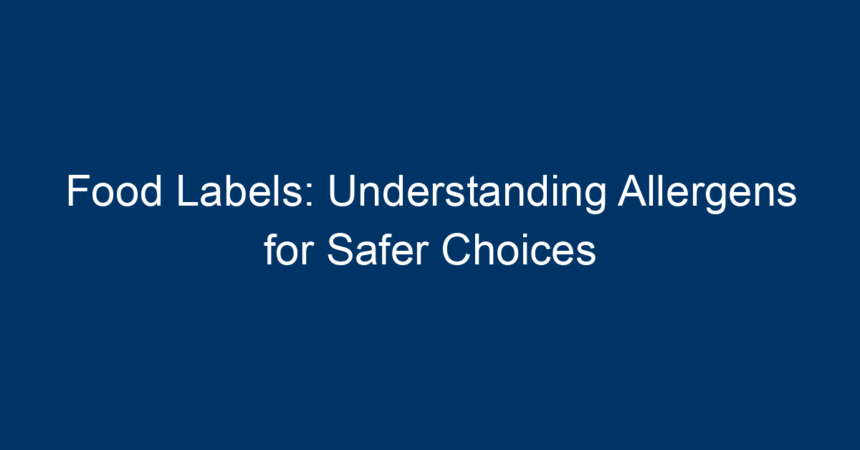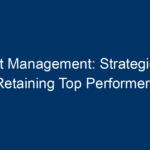Navigating the aisles of your local supermarket can be overwhelming, especially when it comes to understanding food labels and the allergens they may contain. For individuals with food allergies or sensitivities, choosing safe and suitable products can sometimes feel like a daunting task. However, by comprehending the information provided on food labels, you can make informed decisions to safeguard your health. This article delves deep into the world of food labels, highlighting the importance of allergen awareness and providing practical tips for safer food choices.
The Importance of Food Labels
Food labels are a crucial component of packaged goods, serving multiple functions. They not only provide nutritional information but also list ingredients, including potential allergens. Understanding and interpreting these labels is vital for anyone with food allergies. By regularly checking food labels, consumers can minimize their risk of allergic reactions and maintain overall health.
What Are Food Allergens?
Food allergens are natural substances in foods that can trigger allergic reactions in sensitive individuals. Common allergens include:
- Peanuts
- Tree nuts
- Milk
- Eggs
- Wheat
- Soy
- Fish
- Shellfish
In the United States, the Food and Drug Administration (FDA) mandates that these allergens be clearly labeled on packaged foods, often referred to as the "Big Eight." Awareness of these allergens is essential for avoiding severe reactions, which can range from mild discomfort to life-threatening conditions.
Reading Food Labels: Key Components
To truly understand the connection between food labels and allergens, let’s break down the various sections of a standard food label:
1. Ingredients List
The ingredients list appears in descending order by weight, meaning the first few items are the most prevalent in the product. Pay close attention to this section, as it will specify any allergens present. If you see an allergen under the ingredients, it’s essential to avoid that product.
2. Allergen Statements
In addition to the ingredients list, food labels often contain allergen statements, typically found in bold or highlighted text. These statements explicitly declare the presence of common allergens and can provide peace of mind. Look for phrases like “may contain” or “processed in a facility that also processes” certain allergens; these indicate cross-contamination risks.
3. Nutritional Information
While the nutritional information section is primarily focused on calories, fats, sugars, and other nutrients, it can also give insights into food choices. For instance, some individuals with certain allergies may opt for products lower in saturated fats or sugars, as these can aggravate other health conditions.
The Role of Cross-Contamination
Cross-contamination occurs when allergenic foods come into contact with non-allergenic foods, creating a risk for those with allergies. This can happen in various contexts:
- Manufacturing Facilities: If a product is processed in a facility that also processes allergens, the possibility of cross-contamination exists.
- Restaurants and Cafés: Kitchen practices can expose diners to allergens if food preparation areas aren’t thoroughly cleaned.
- Home Preparation: Using the same utensils for various foods without adequate cleaning can also lead to cross-contact.
Minimizing Cross-Contamination Risks
To reduce the risk of cross-contamination:
- Always read food labels carefully.
- In restaurants, communicate your allergies clearly to the staff.
- Use separate utensils and cutting boards when preparing food at home.
Special Considerations for Specific Diets
Different dietary preferences, like veganism or gluten-free, can also intersect with allergen awareness. For instance, a product labeled as "gluten-free" may still contain allergens like soy or nuts. It is imperative for individuals with multiple dietary restrictions to read food labels thoroughly for all allergens listed.
Vegan and Allergen Labels
While many believe that vegan foods are inherently allergen-free, this is not always the case. Common allergenic ingredients like soy and nuts frequently appear in vegan products. Therefore, individuals following a vegan diet must still scrutinize food labels to ensure they are safe.
Gluten-Free Products
Similar to vegan products, those that are gluten-free can contain allergens. Always verify the labels for cross-contamination warnings and allergenic ingredients, especially if you are sensitive to wheat or other grains.
The Impact of Regulations on Food Labeling
The FDA plays a critical role in ensuring that food labels accurately reflect allergenic content. Since January 2006, laws have stipulated that all packaged foods must clearly disclose any of the major allergens listed previously. These regulations are beneficial in providing consumers with vital information about what they are eating.
International Differences
It’s also worth noting that allergen labeling regulations can differ significantly from one country to another. For example, food labels in the European Union have stricter guidelines regarding allergen declaration. Understanding the local laws wherever you are can help ensure you make safe choices.
Actionable Steps for Safer Choices
Understanding food labels and the allergens they disclose is just the beginning. Here are actionable steps to help you make informed and safe choices when shopping for food:
- Educate Yourself: Take time to learn about common allergens and symptoms of allergic reactions.
- Always Check Labels: Make it a habit to read food labels on every product you purchase, even if it’s a brand you’ve bought before.
- Keep a List: Maintain a checklist of allergens you are sensitive to and refer to it while shopping.
- Inquire: Don’t hesitate to ask questions at restaurants or stores about how food is prepared and what ingredients are used.
- Shop Smart: Familiarize yourself with brands that are known for allergen-friendly products.
- Stay Informed: Follow updates from organizations such as the FDA regarding allergen labeling and safety standards.
Conclusion
The world of food labels can initially appear daunting, especially for those with food allergies. However, by gaining an understanding of allergens as well as how to read and interpret labels, you can make safer choices that protect your health. Remember, the key to effectively managing food allergies lies in vigilance and education. Equip yourself with the knowledge you need, and empower yourself to navigate the grocery store with confidence.
Making informed choices not only benefits your personal health but sets an example for those around you. Stay informed, remain cautious, and ensure that your food choices are as safe as they are delicious.




